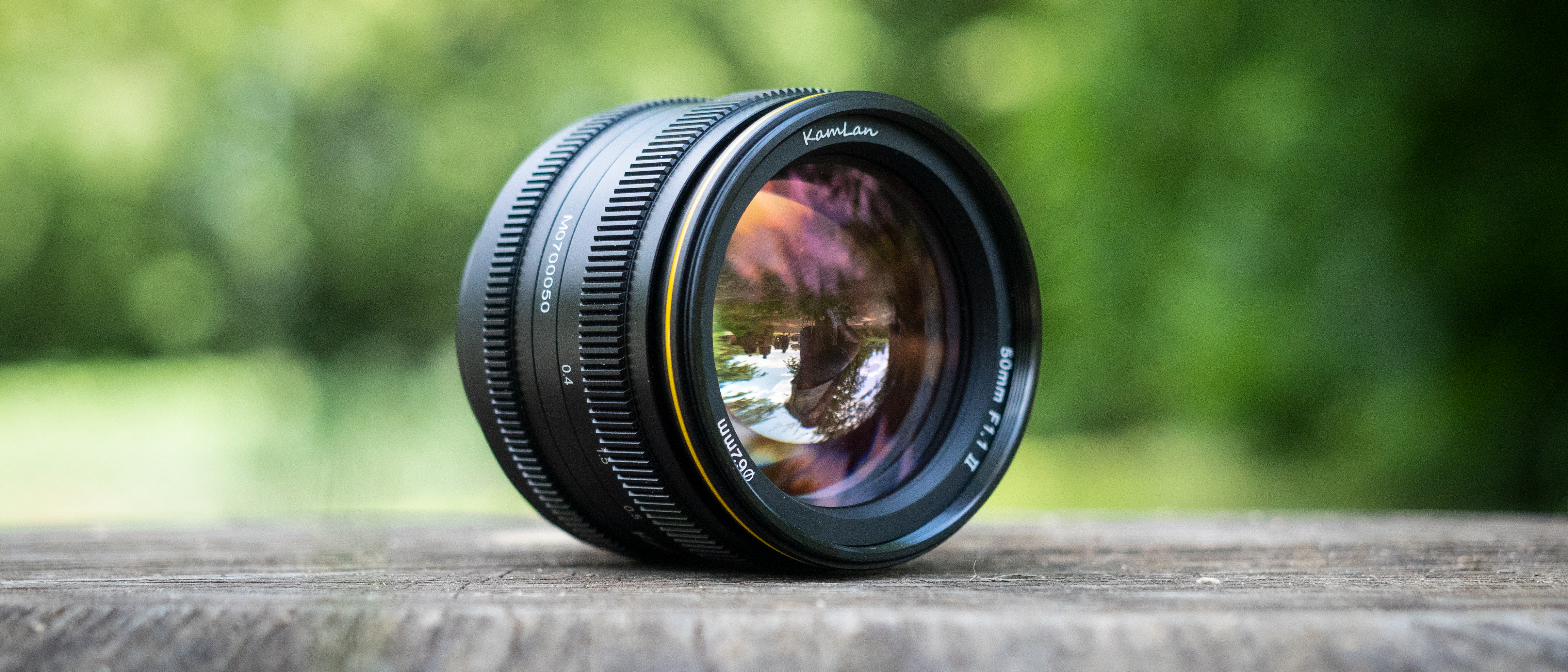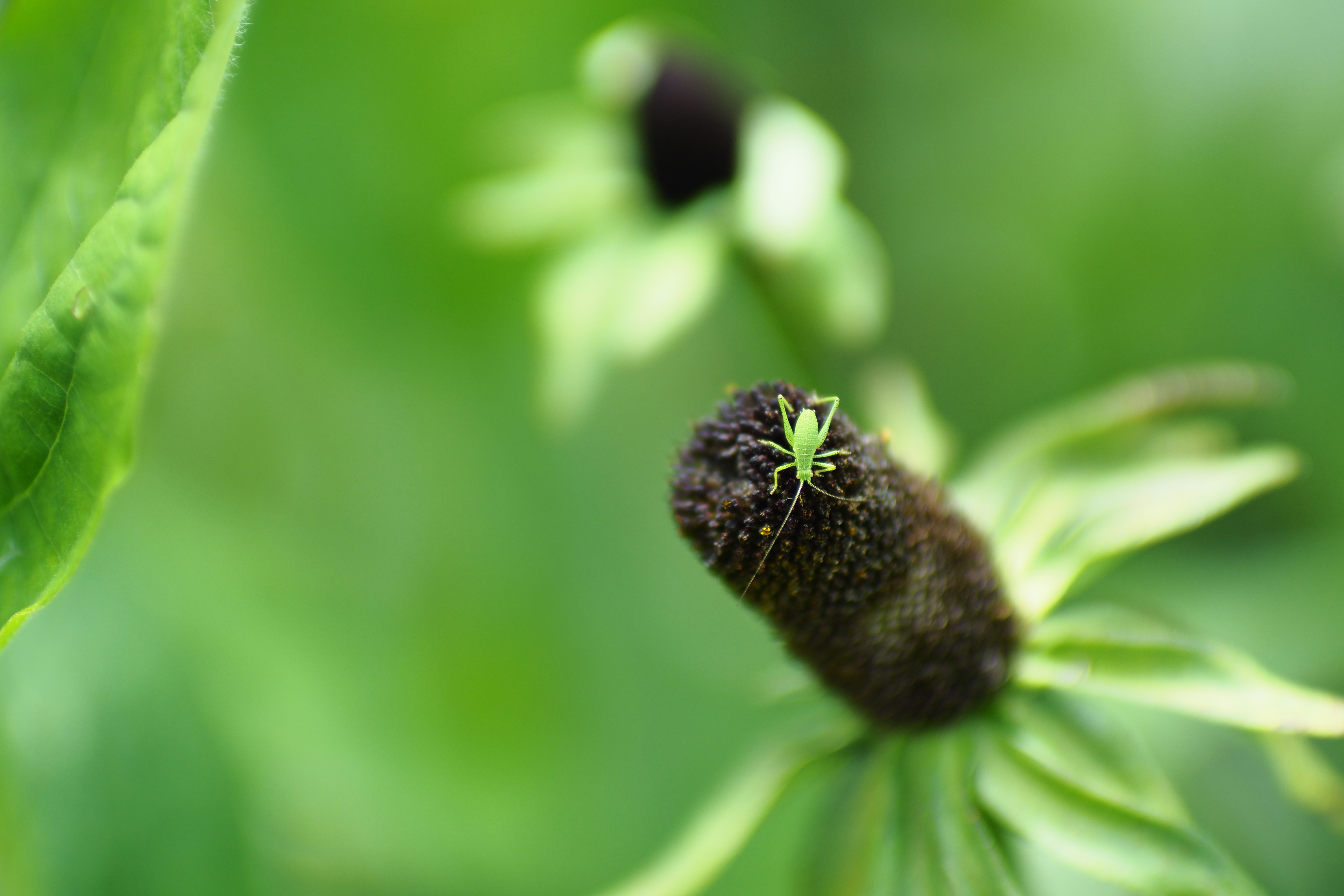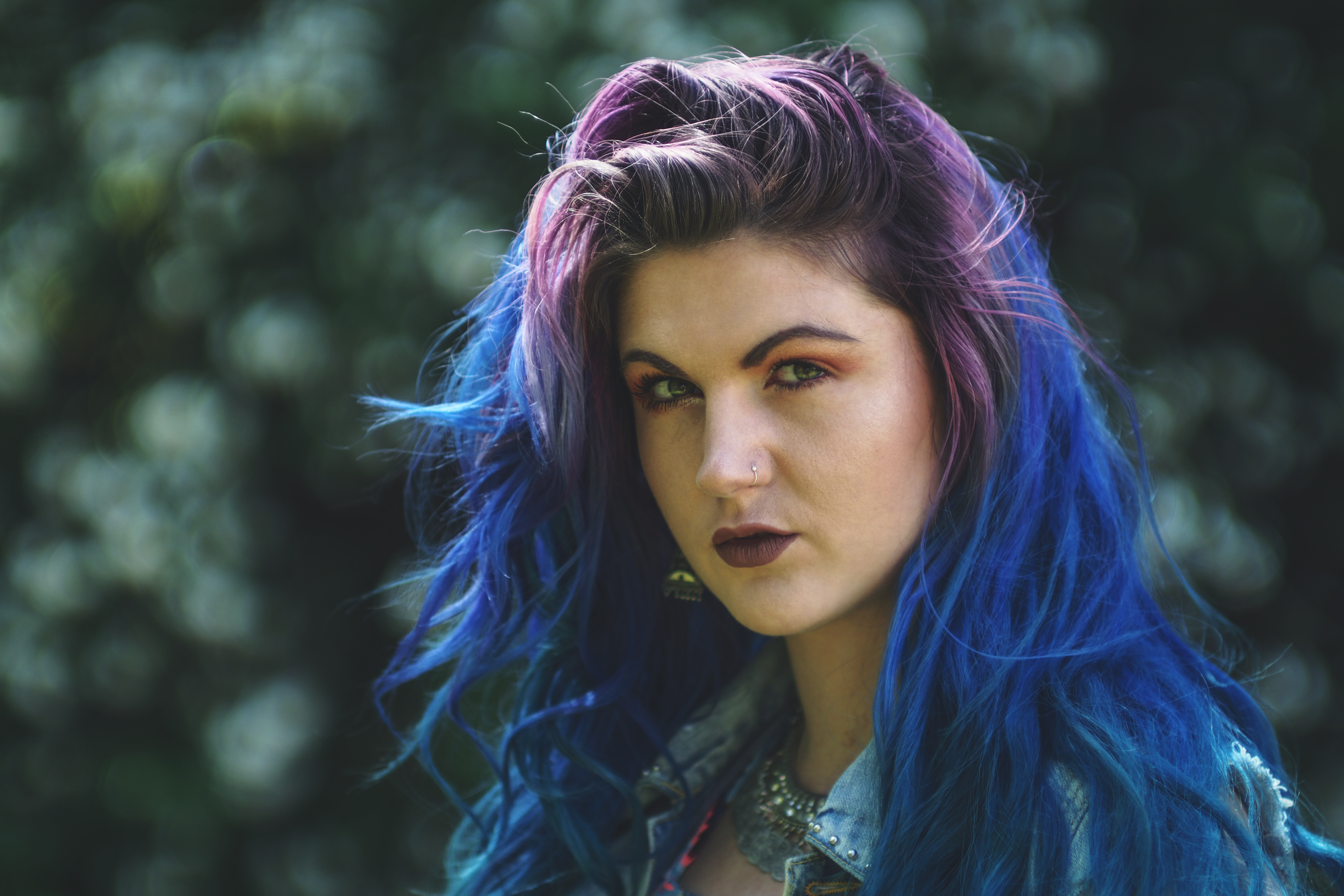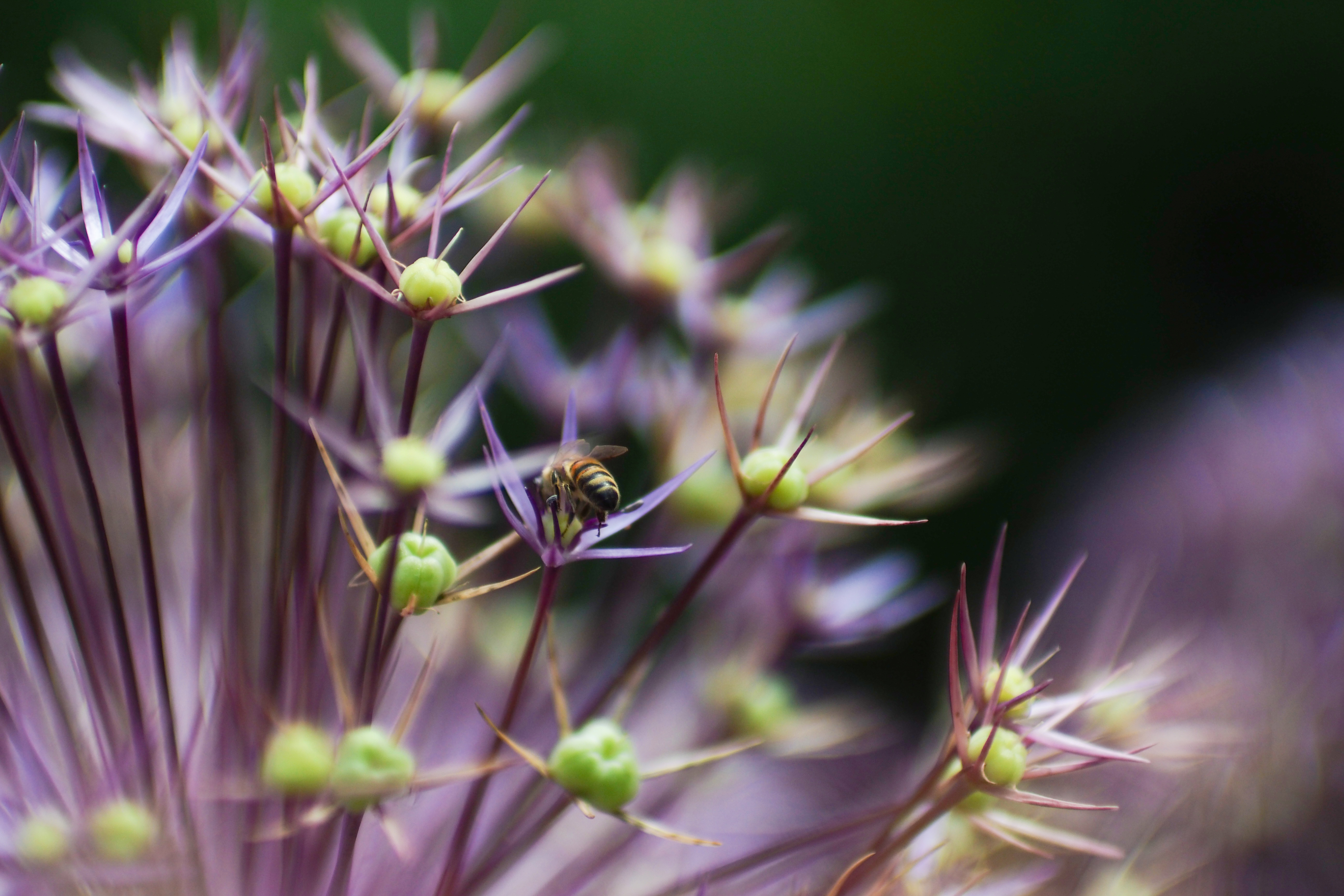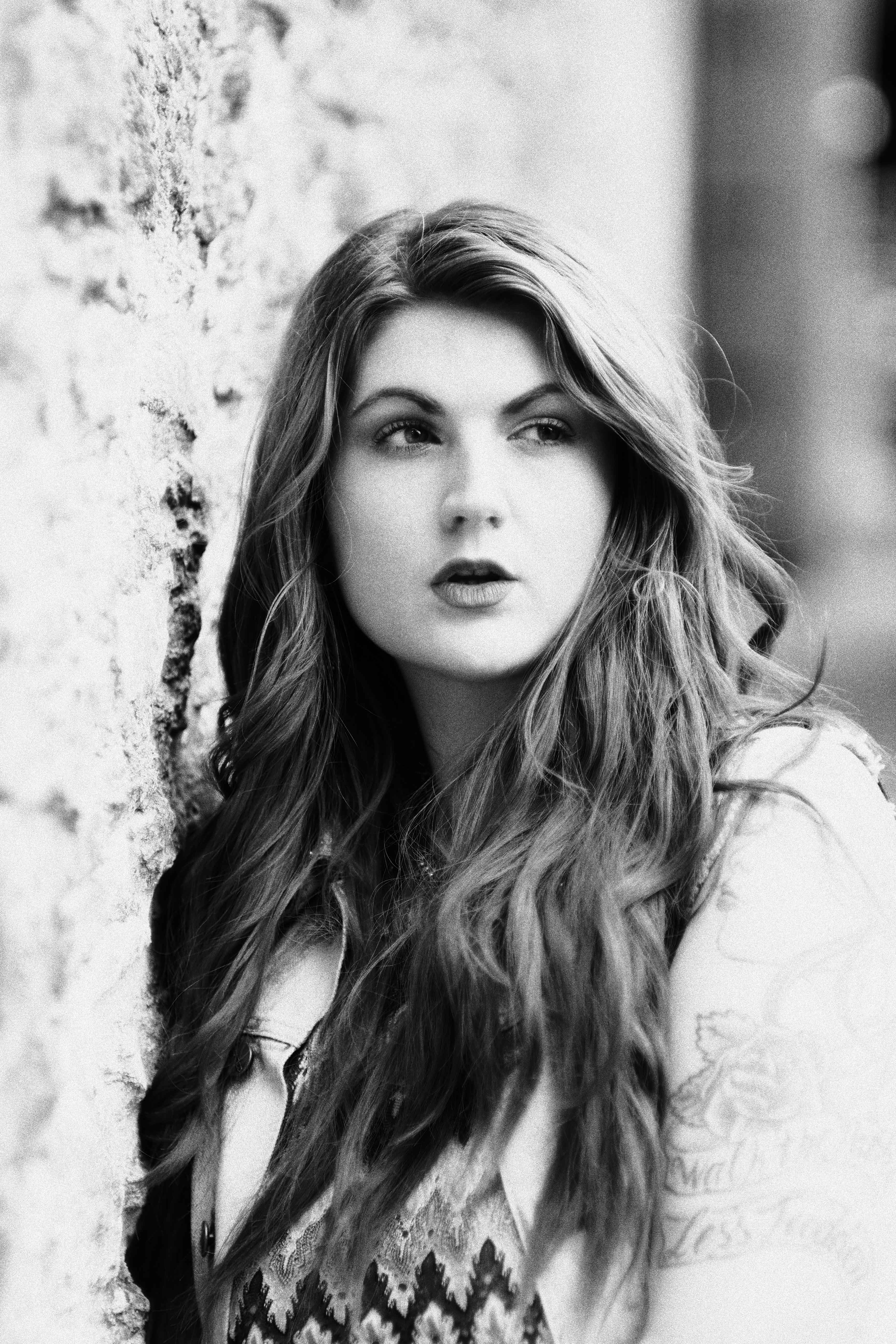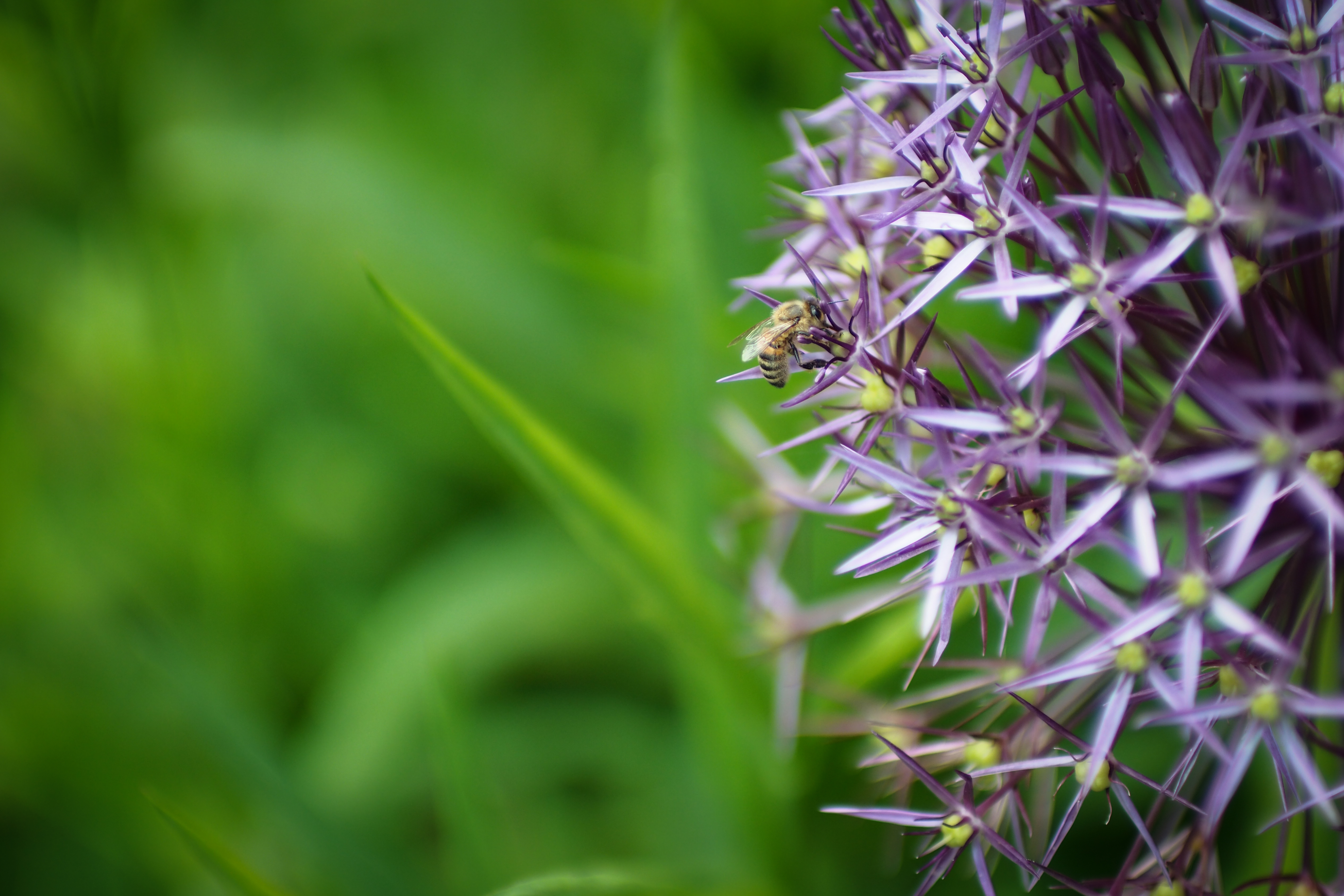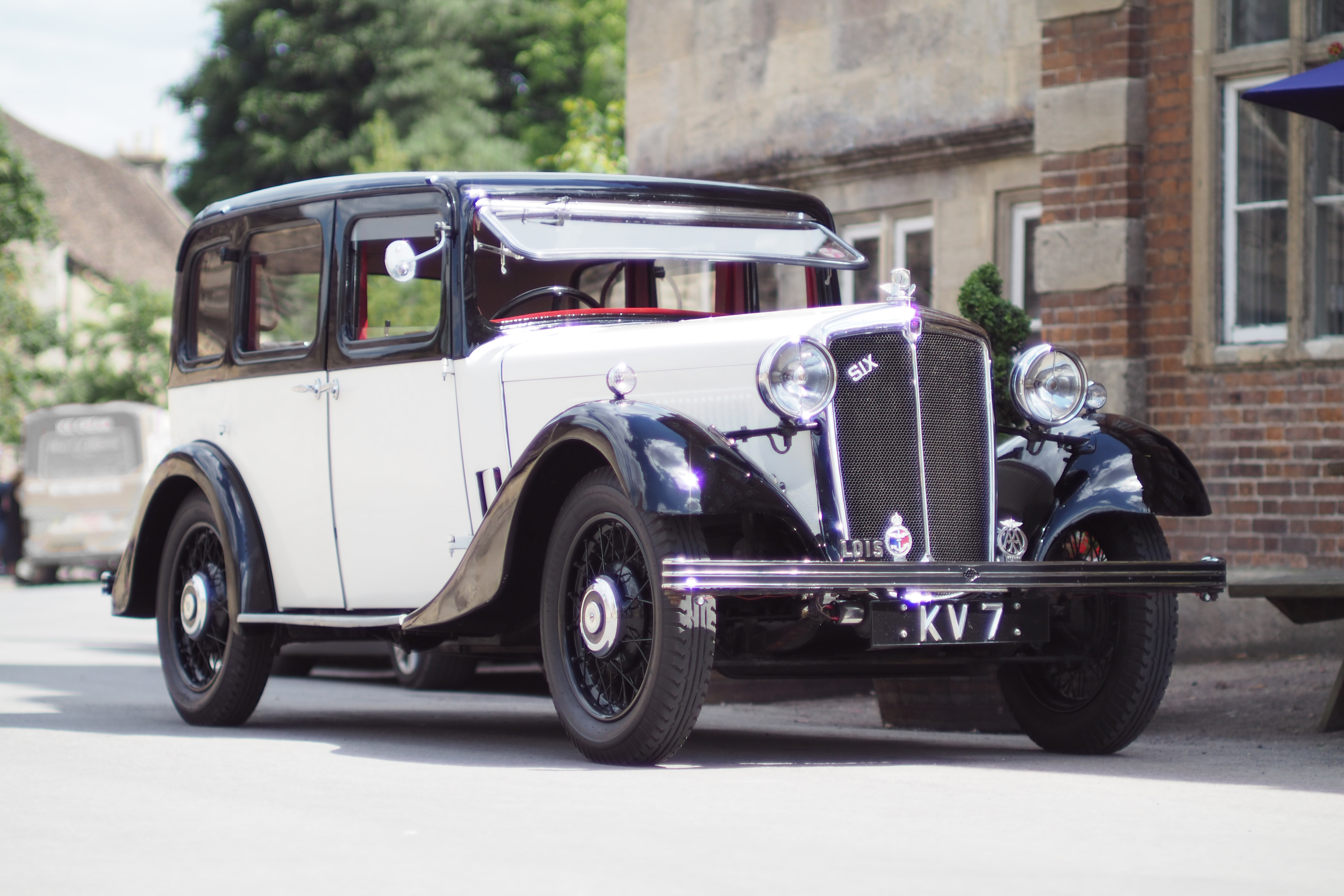Digital Camera World Verdict
Its incredible maximum aperture enables the Kamlan 50mm f/1.1 II to achieve the kind of depth of field only otherwise possible with full-frame cameras. Shooting wide open produces beautiful bokeh and silky smooth background blur – and, despite less than stellar performance in our lab tests at f/1.1, the proof is in the pudding and eyes are still very much sharp enough to sparkle in portraits. Between the gorgeous images it delivers, the impressive build quality and the phenomenally low price tag, there's almost nothing not to love about this lens.
Pros
- +
Perfect portrait lens
- +
Beastly bokeh!
- +
Excellent build, metal hood
Cons
- -
• Peak sharpness is beyond f/2
- -
• Prone to fringing and bloom
- -
• Maybe a bit big for smaller bodies
Why you can trust Digital Camera World
The original Kamlan 50mm f/1.1 Bokeh Beast developed something of a cult following among the crop sensor community. An f/1.1 lens is a rarity at the best of times, especially at its ludicrously low price of $170 / £133.
Optically it wasn't the perfect lens, soft when shooting wide open (and let's be honest, you don't buy f/1.1 glass because you intend to use it at f/4), prone to chromatic aberrations, and with "swirly" bokeh that wasn't to everyone's taste.
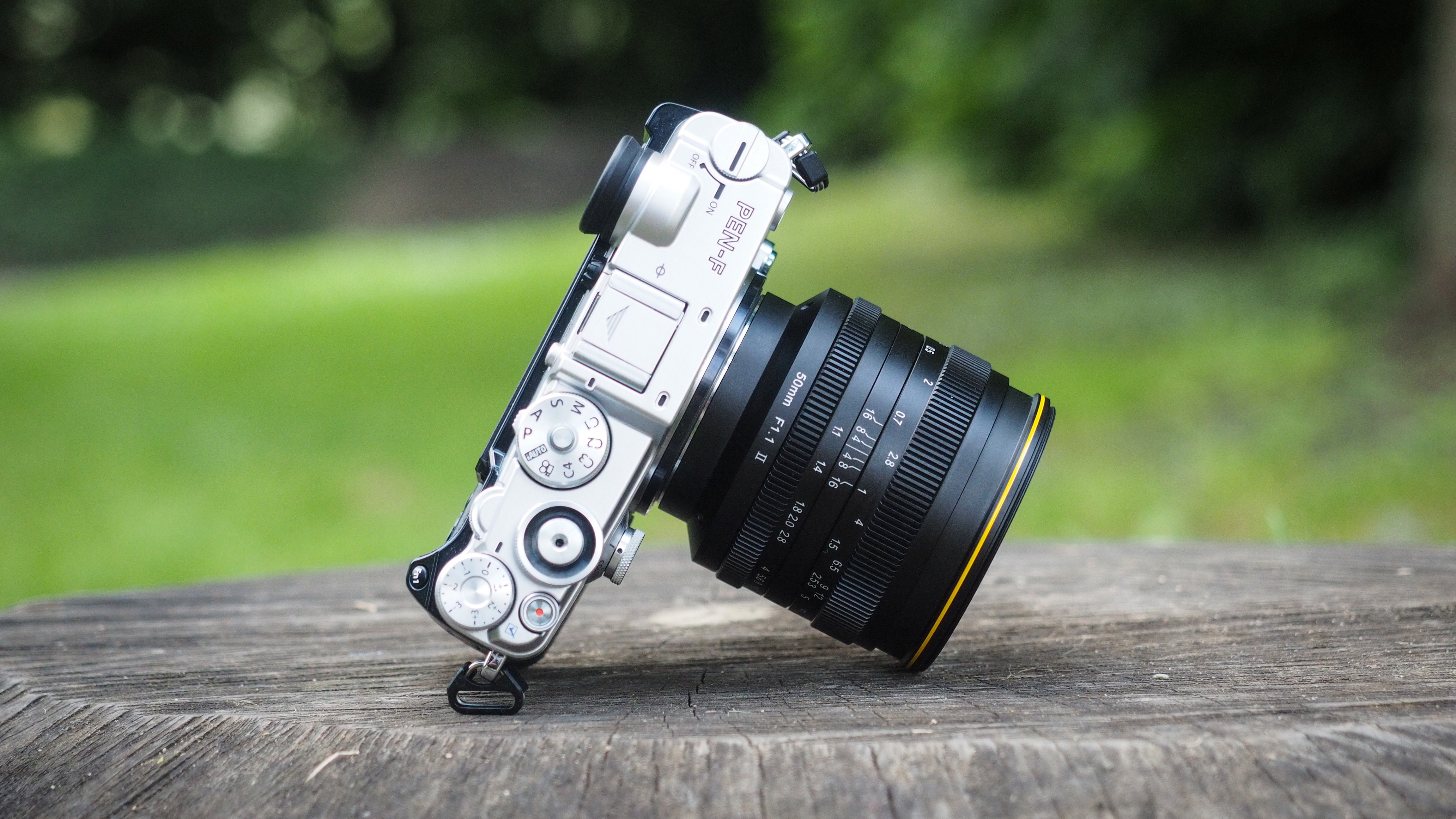
Still, it found an appreciative audience among APS-C and Micro Four Thirds users who loved the almost unmatched depth of field it offered. So expectations were high for its successor, the Kamlan 50mm f/1.1 II New Bokeh Beast With more elements, more groups, a slightly higher price tag and the promise of improved performance, does the sequel outdo the original?
Kamlan 50mm f/1.1 II: Specifications
Mount: Sony E, Fuji X, Canon EOS M, Micro Four Thirds
Effective focal length: 75mm (Sony, Fuji), 80mm (Canon), 100mm (MFT)
Autofocus: No
Image stabiliser: No
Minimum focus distance: 0.4m / 1.3ft
Max magnification factor: 0.25x
Focus limit switches: No
Internal focus: No
Filter size: 62mm lens, 72mm hood
Iris blades: 11
Weather seals: No
Supplied accessories: Hood, cloth
Weight: 600g
Kamlan 50mm f/1.1 II: Handling and build quality
Our first reaction to the lens is just how well built it is. For a Chinese lens that only costs a couple of hundred bucks, you wouldn't necessarily expect build quality to be a priority – but you'd be very, very wrong.
The New Beast is substantial, solid, and very well engineered. It not only comes with a metal lens hood (which has its own filter thread), but bespoke Kamlan front and back caps rather than generic ones – it's a small touch, but speaks to the quality of the lens.
The focus ring is precise and well damped, rocking perfectly back and forth until you snap the point of focus. The aperture ring is firm – not stiff, but it definitely requires intent to turn it, ensuring that it won't get errantly knocked while shooting – and is de-clicked, making this a great option for shooting video.
The best camera deals, reviews, product advice, and unmissable photography news, direct to your inbox!
We paired the lens with an Olympus PEN-F, which is probably the smallest body you'd want to use it with. It was by no means unwieldy, but smaller Micro Four Thirds cameras will start to feel very lopsided.
The combo paired very well, with the PEN-F's vintage ergonomics and shooting style complementing the Kamlan perfectly. At 600g it's not a petite lens, but it's by no means problematic to shoot with on a small system.
Kamlan 50mm f/1.1 II: Performance
First things first: while it's billed as a 50mm f/1.1, remember that this is affected by the crop of your sensor.
On Sony and Fuji APS-C bodies it has a focal length of 75mm, with equivalent depth of field of f/1.65. On Canon EOS M its focal length is 80mm with a depth of field of f/1.75, while on Micro Four Thirds it's 100mm and f/2.2 (in all instances, light transmission remains f/1.1, so no performance is lost in low light).
So, far from a nifty fifty, the Kamlan becomes a portrait lens – and with the behavior of a slightly narrower aperture in terms of depth of field, this manual focus-only optic is significantly easier to handle than a true f/1.1 lens.
Which isn't to say that it's easy! Manually focusing at anything below f/2 can be very tricky, as anything from camera shake to minute movement from your subject is enough to throw your focus off. Focus peaking and magnification are definitely your friends when using this lens.
Where the original lens was definitely soft wide open (and indeed, soft until about f/2), the New Beast is a definite improvement. It's not pin-sharp, but you can see from the full-size sample portraits that it's more than sharp enough at f/1.1 for pleasing images.
The improved lens formulation (eight elements in seven groups, as opposed to five and five in the original) and larger diameter element have also improved the quality of the bokeh.
While the original lens exhibited noisier "onion ring" bokeh (where the 'bokeh balls' look like halved onions with concentric ring patterns), the new lens is much better controlled and renders balls with more pleasing "soap bubble" bokeh, with pleasingly soft falloff in the out of focus areas.
Distortion and vignetting are incredibly well controlled; vignetting is almost a non-issue and the bokeh only exhibits "cats eye" characteristics at the very extremes of the frame (see the top-left of the image of the children in the stream).
However, chromatic aberration – an issue on the original lens – is still very pronounced. You can see from the image of the vintage car that fringing is an issue in high contrast situations, and bloom can also present itself.
Again, this is when shooting at f/1.1 – the lens is optically much better behaved when you stop it down to f/2 and beyond, but you're probably not reading this review because you plan on shooting at anything other than f/1.1.
And you don't really need to. It's a fabulous portrait lens, and you can feel confident shooting wide open and getting that beautiful background blur. It takes a mean macro shot, too, with a shorter 0.4 meter / 1.3 feet working distance.
Trying to manually focus on moving insects at f/1.1 can be quite the challenge, but the Kamlan is capable of some beautiful plant and insect shots – shooting that wide means you can keep your shutter speed at 1/8000, which definitely helps get subjects sharp!
Kamlan 50mm f/1.1 II: Lab tests
Even though it's a budget lens, we thought it would be interesting to put the Kamlan 50mm f/1.1 II through its paces in our lab. Obviously we're more willing to forgive technical shortcomings due to this optic's price and its unique USP, but it's still illuminating to see how it performs during testing.
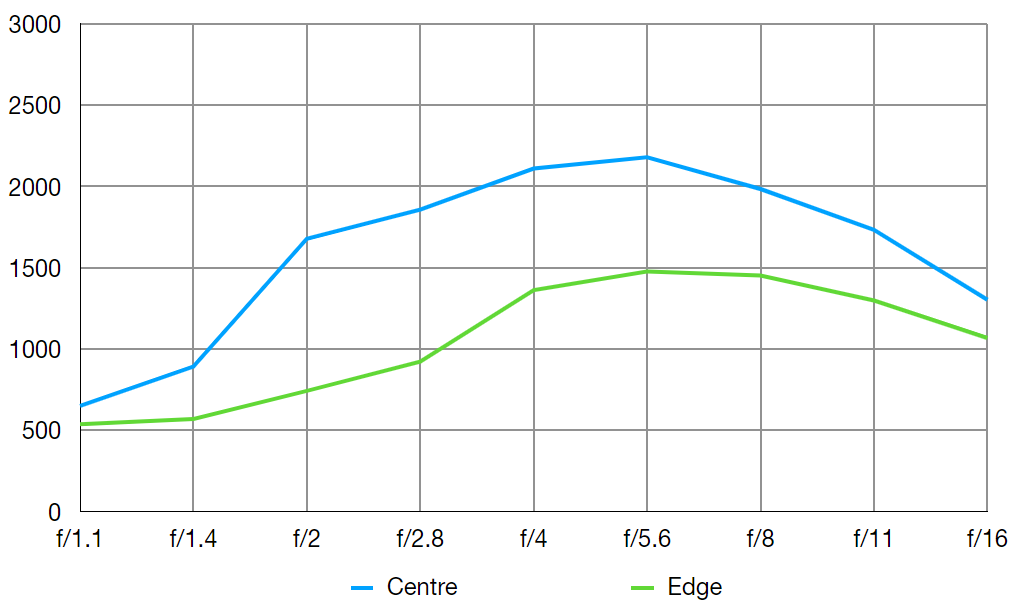
Sharpness:
Very fast, large aperture lenses don't tend to produce their best sharpness wide open, and the Kamlan 50mm f/1.1 II is no exception. Centre sharpness is poor at f/1.1 and f1.4, but takes a surprising leap at f/2 and the lens is very sharp from this point on. In practice, however, sharpness for portraits at f/1.1 is more than acceptable – click to view the below close-up image at full size and see for yourself.
You'll need to stop down to f/4 to get decent corner sharpness as well, but given that you'll likely want an increased depth of field when whole-frame sharpness is required, this is less of an issue.
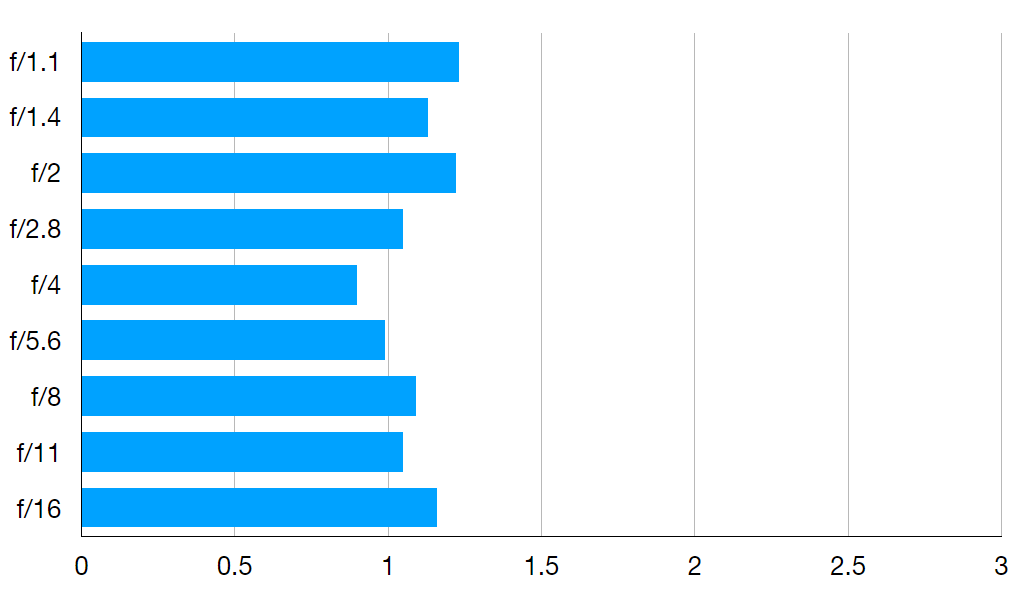
Fringing:
The "New Bokeh Beast" generates minor fringing at all apertures, but it's low enough not to be distracting. As with sharpness, the lens's sweet spot is at f/4-f/5.6.
Distortion: (0.06 – no graph)
We tested the lens on an Olympus body, which automatically corrects any lens distortion in the raw file – this correction cannot be disabled, so any distortion the lens may produce will never be visible in your shots. However, we wouldn't expect a lens of this focal length to introduce much distortion even if in-camera processing wasn't available.
Kamlan 50mm f/1.1 II: Verdict
While the Kamlan 50mm f/1.1 II isn't optically perfect, its enviable aperture renders the kind of dreamy depth of field that other lenses can only dream of – and that is what people buy this lens for.
Its equivalent focal length makes it perfect for portraits, though it's versatile enough to work as a light telephoto street photography lens, and it can even turn its hand to macro if you're feeling brave.
If you want the kind of depth of field that's usually reserved for full-frame sensors, the Kamlan 50mm f/1.1 II is a fantastic creative tool – and that, at just $229 / £180, you can easily forgive any optical shortcomings.
Read more:
The best Micro Four Thirds lenses for your Olympus or Panasonic camera
The best Sony lenses
The best Fujifilm lenses
Portrait photography tips and more
Three prime lenses every portrait photographer needs to consider

James has 25 years experience as a journalist, serving as the head of Digital Camera World for 7 of them. He started working in the photography industry in 2014, product testing and shooting ad campaigns for Olympus, as well as clients like Aston Martin Racing, Elinchrom and L'Oréal. An Olympus / OM System, Canon and Hasselblad shooter, he has a wealth of knowledge on cameras of all makes – and he loves instant cameras, too.
